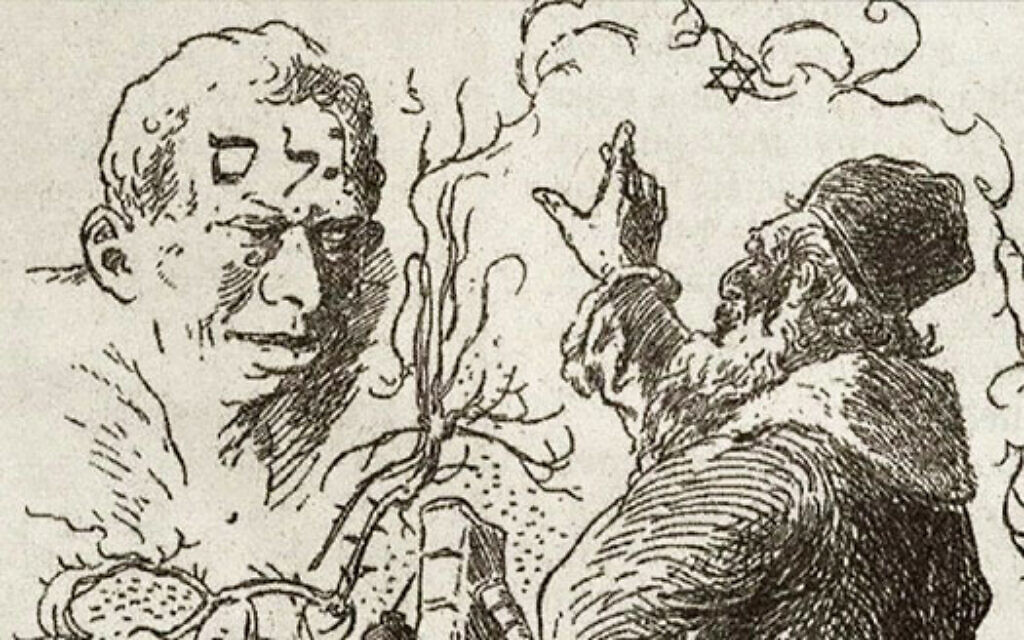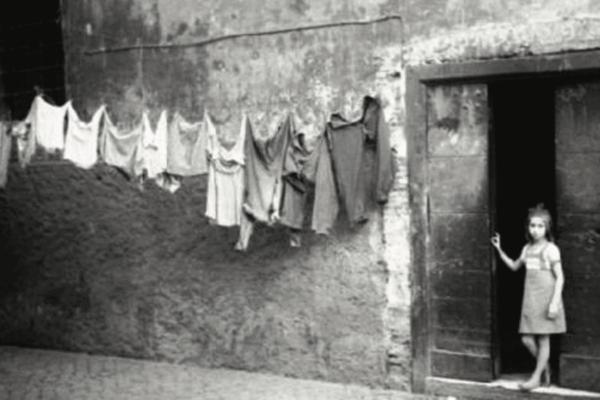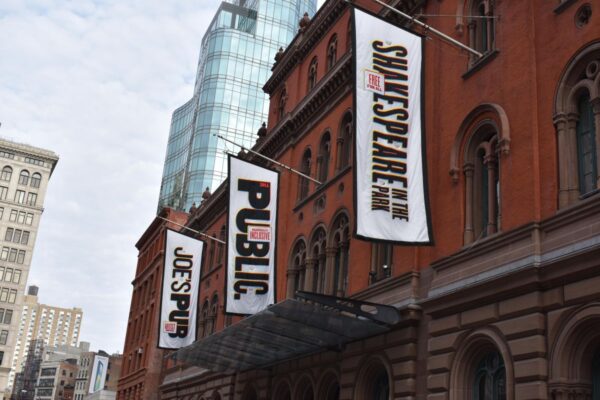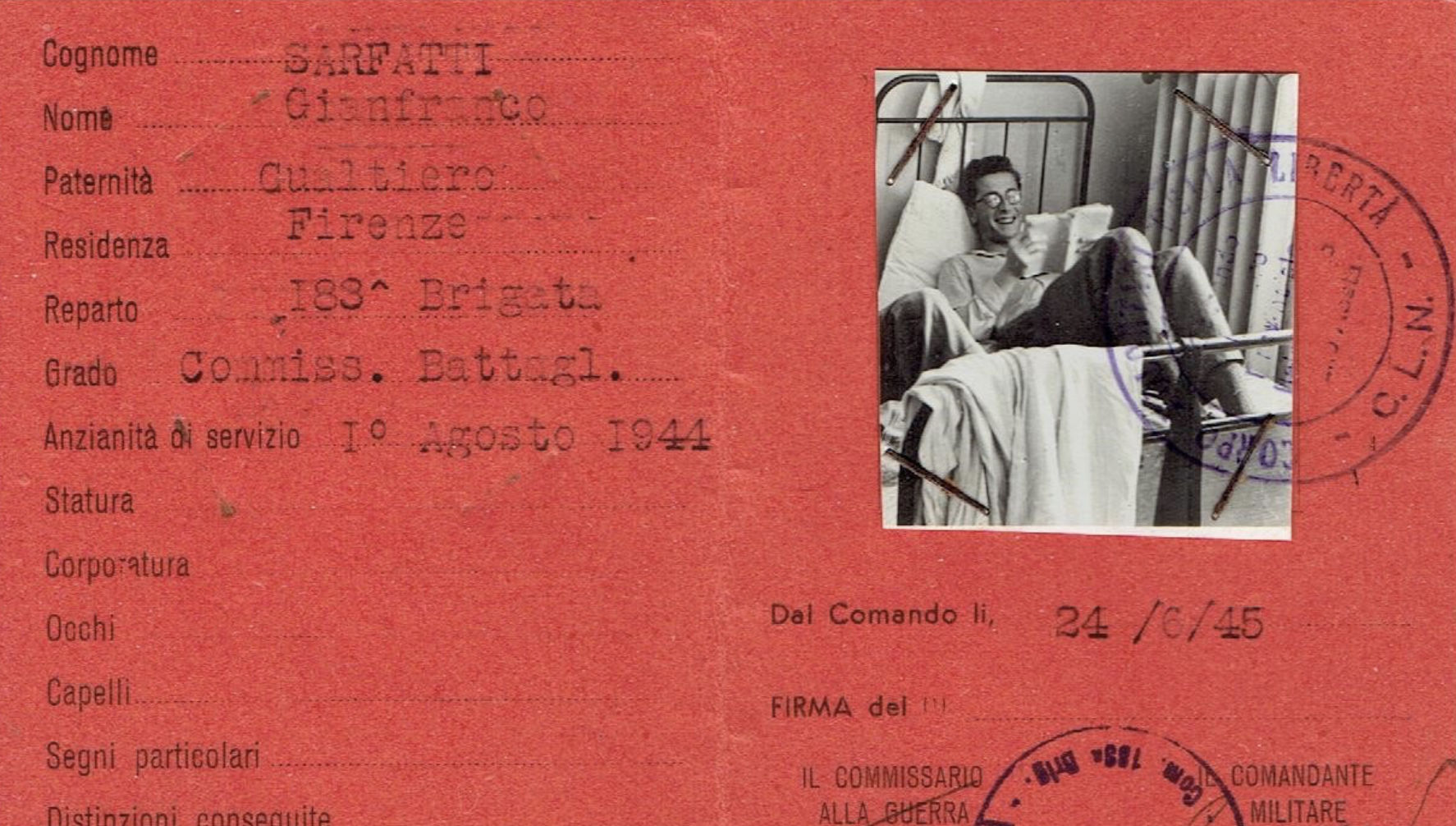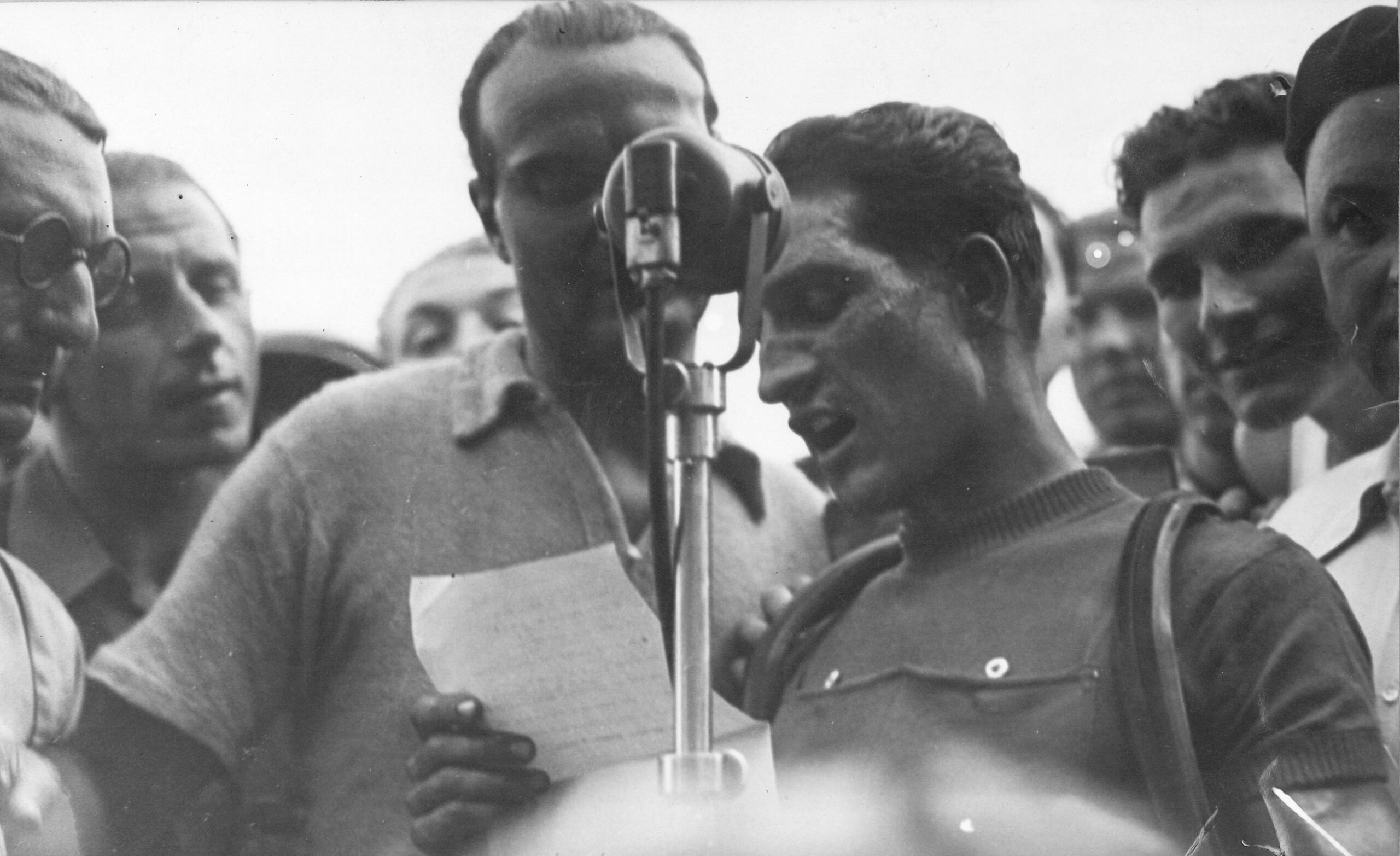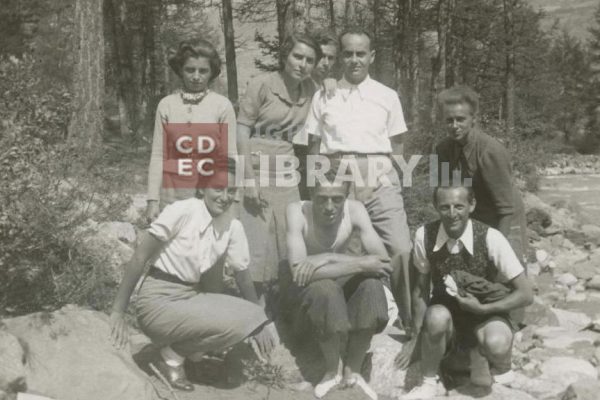In the past few years, Centro Primo Levi’s table has been animated by conversations, doubts, and questions about Levi’s writings in light of current events. I kept a log of these exchanges, and I am attempting to address some of them, in particular regarding the public use of the “Holocaust” as a political instrument. Because the notes were taken in a non-systematic fashion and topics re-emerged and developed over a long period, I organized this material in the form of questions and answers. The questions result from my effort to summarize what I felt were the main elements of doubt, conflict, and anxiety. The answers express my take on certain issues that loom large in today’s debates. As one of many people who have worked in this field, it seems evident to me that something went wrong. I am not surprised, as a good portion of what went wrong has unfolded under the (often critical) eyes of many of us. I think that, at this moment, it is important to challenge untenable narratives of victimhood, take responsibility, and try to disentangle the labor of knowledge from any attempt to trivialize it and bend it to short-lived ends.
At least since the inauguration of the United States Holocaust Memorial Museum in Washington D.C. in 1993, the Nazi project of extermination of the Jews has come to be considered a paradigm of all evils, the knowledge and understanding of which can educate citizens and prevent racism and future massacres. Recently, however, the same history has been called upon with opposite motivations in the protests over the destruction of Gaza. On one side, it is invoked to inscribe the October 7th massacre in a long history of victimization of the Jews; on the other, it is charged with the accusation of being used by the Israeli government and pro-Israeli activists to deflect attention from the ongoing slaughter of the Palestinians. Does the current debate pose a serious threat to the idea of the Holocaust as a universal paradigm of evil?
NI: This idea has always been dubious, both ethically and intellectually. The USHMM was the first to challenge it when it felt it was used outside of its control. Think of the polemic on historical analogy in 2018 that forced the museum to clash with its stated principles to curb the use of the Holocaust based on this very paradigm, but not aligned with its political views. Today, many in the field have begun to question the idea that the popularization of Holocaust education is, per se, a means to foster tolerance, especially as its development has coincided with a dramatic increase in racism and social violence that cannot be contextualized and understood through the sole lens of the Holocaust as presented in our culture.
The current tension between different and even opposite uses of the Holocaust is not surprising. The word itself, which many, including Primo Levi, rejected, has a reductionist effect and, from a functional viewpoint, has become a brand. It became associated with assumptions and responses that are extraneous to the idea of intellectual process and the uncertainty of exploring the past. It can be used as an empty vessel and filled with everything and its opposite. Above all, as Levi saw as early as 1970, “the memory that circulates” — through popular culture — “is skewed … people tend to see the individual event, the horror, like torture, which was there but is completely marginal; what should be remembered, and is not, is that this events concerned the mass, entire masses of people lived like that, and for the most part without ever being tortured, they died”.
Q: Isn’t learning history at the base of Primo Levi’s work?
NI: The study of history does something beyond producing a set of results or a list of facts. It develops a dynamic between faraway events and our conscience in which both are affected; we gain insight into the past, but we also modify our assumptions and epistemological tools. This process is humbling and produces narratives that are very specific but also open to change and to conversing with others. In this sense, it is central to Levi’s work. However, this process needs time, dedication, relationships, and thus priorities that are not generally cultivated in our culture.
Q: In the past year, public figures as distant as Pankaj Mishra and Marianne Hirsch —among others—have written about how the Holocaust has been transformed into a weapon to silence criticism of Israel and mobilize Jewish societies over the alleged rise of anti-Jewish sentiments. The debate has since escalated. Where can it go from here?
NI: Among some of the people who work in the field, there has always been concern about the use of the Holocaust for corrective or edifying purposes. This is a minority position and, unfortunately, had little consequence. As Marianne Hirsch pointed out in her Public Books article, the question now is not about assessing political maneuvers. We need to ask what space scholars and institutions have left for these maneuvers to take place. It is an intellectual question and a moral question.
The political exploitation is undoubtedly there, and we need to do what we can to restore dignity. At the same time, we should not understate the fact that this research field [Holocaust studies] started thanks to the dedication of many people who had no rewards other than the work itself. This journey was often arduous and took a high personal toll on those who pursued it. Scholars struggled against public indifference, institutional hostility, and the victims’ reluctance to be defined by, and therefore confined to a painful past.
It took decades before it became a flourishing industry able to catalyze the investments of many disparate sectors of American society. This shift created opportunities for scholars and a space for communal healing. It also made the field vulnerable to political meddling, diluted the discourse, and opened the door to all sorts of expediency.
In today’s debate, we should not lose sight of these transformations, maintain distinctions, and at the same time ponder what forces have taken it over and try to deconstruct them.
Q: How do you think this “flourishing industry” will be affected by the disappearance of the last witnesses?
NI: I hear this concern a lot, and it seems to me a marketing device more than anything else. It plays on the belief that memory helps fence off racism and that without it, antisemitism will resurge. It only takes observing current events to know that this logic does not reflect reality. For at least two decades, the Holocaust has disproportionately been present in public and educational life. At the same time, racism has become increasingly explicit. I would add that the pervasive use of the Holocaust as a single reference in all sorts of social settings has become a reason for resentment.
On the other hand, witnesses have played a fundamental role in establishing the ethical necessity to know this past. This will not change. We all die at some point, and it is a painful loss for our loved ones. But I don’t see how this will hinder the study of the Holocaust. Like all historical fields, it is in progress, and there is plenty of work to do. The work done this far is continuously re-evaluated, perspectives are reconsidered, and new connections and evidence emerge. Survivors leave us with a moral direction that is much more meaningful than any absolute truth.
Q: Do you mean that you do not see any change caused by the disappearance of the last witnesses?
NI: I certainly do. But not in the sense that the Holocaust will fall into oblivion after the last witness is gone. On the contrary, it seems that with the disappearance of witnesses, there is less restraint in the public presentation of the Holocaust. It has progressively evolved into a spectacle, becoming more literal and often gaudy.
Q: What kind of restraint?
Until the USHMM opened, the question of what could be shown and how was strongly felt. The iconic mountain of shoes evoked both the tragedy and the restraint demanded to represent the magnitude of the crime and the suffering. Today, these ethical dilemmas are gone. Instead of maturing ways of relating to a past that cannot but become more past, we have seen a frenzy to oppose the passing of time.
Q: Can you make some examples?
NI: The most literal one is the “race to record” the last survivor, the last rescuer, or the last perpetrator that has become an institutional mantra as if time and age (or math and biology) did not exist. Its byproduct is even more puzzling: the hologram automations with the voice and look of actual survivors and the gifts of absolute sameness and eternity. I imagine someone studying our era a century from now might think that a strange spell had taken over a part of humanity.
Another and equally pernicious trend is the proliferation of “theme park” style exhibitions, exhibitions that claim to be experiential and “interactive,” aiming at the mechanism of identification similar to that of any propaganda. One of the first large-scale projects of this kind was Musealia’s Auschwitz, whose subtitle, “not long ago, not far away,” expressed precisely the idea of removing events and memory from history, time, and space, and consigning them to the present (and the market).
Q: Isn’t this experiential exhibition style a way to broaden public appreciation of something that would be otherwise elitist and removed from public conscience?
NI: That’s a common talking point in support of commodification. I find it a circular argument. Cultural and research institutions struggle to remain engaged with a society that is ever more distracted and taken with ephemeral interests. Instead of probing their specific focus and looking at ways to maintain vitality for communities that, in absolute terms, are not smaller than before and can be re-engaged, the trend has been to cater to demands that are incompatible with knowledge, study, critical analysis, or art. This strategy is self-defeating and has only deepened the crisis. What we see is that many of these institutions need more and more funds and produce less and less content.
Q: Are you saying that the market drives these “experiential” productions?
NI: Not exclusively, but it is an aspect to be considered to avoid reacting to these dynamics as if they were something more profound. The market co-opts almost everything that is considered a promising sale. Market bureaucracy is made of all sorts of professionals and consultants, and fed by concerns that are, for the most part, scripted exercises. They do their job based on publicity packages of social edification like “political correctness,” “gender diversity,” “identity,” and “family values,” “memory,” in this case, also the “antisemitism package.” The function of these largely inconsequential narratives has little to do with the values they claim to pursue, but is a way to avoid real questioning by producing frames that already contain simple questions and answers. I think we should pay attention to these logistical factors, as these notions of bureaucracy and propaganda were developed and perfected in the ideological frame of the Fascist and Nazi era.
Q: But these narratives stem from the fear of indifference and oblivion, which is a constant danger in our society.
NI: Oblivion may not be the point here. Pre-packaged and spectacle-based representations do not necessarily produce knowledge and may have motivations and consequences beyond this debate. The fear of oblivion is the reason (whether well-founded or not) that leads many people to accept spectacle and excess in “good conscience”. In this sense, survivors were guarantors of a reality principle and, thus, somewhat of a fence against exploitation. They have forced the system to engage with a complex concept of truth even if this caused inconsistencies, clashes, and methodological conundrums.
The mushrooming of blockbuster so-defined “full-scale” exhibitions, be it Auschwitz or Anne Frank, a bombastic musical on The Garden of the Finzi Continis, sexy cabaret shows on “concentration camp music,” or simulations of survivors who function like Siri, place history in a different realm of fruition.
The “content” of these productions is secondary to the spectacle. Neither the curators nor the public nor the press bother to even address them as content. Take the Auschwitz exhibition. It was conceived as a “live experience” accompanied by a hodgepodge of wiki-quotes oscillating between ridiculous ideas like “the Jews are an ancient Middle Eastern people who base their calendar on the moon” and more serious distortions such as that never before Nazism, had anyone on European soil conceived of blood-based racism—ironic for a show produced in Spain, where the “limpieza de sangre” (cleanliness of blood) was theorized centuries before Nazism. The press mostly registered the spectacle of gas pipes and bunk beds, and the pseudo-encyclopedic apparatus. Hardly anyone reported the bizarre statements disseminated throughout the show that amounted to a serious trivialization of history. Clearly, oblivion is not the issue at stake here. We ought to wonder if some degree of oblivion would be better than this downturn.
Q: In what sense?
NI: In at least two ways. Human beings cannot live under the constant weight of memory, certainly not an industry-driven memory packaged to address all the evils of society. We need room for the old and the new. As one example, the Jewish tradition asks us to remember but also not to look back. It’s a balancing act. Memory itself is made up of what we remember as much as what we forget. Letting some things go can let others come to the surface. In all cultures, people are encouraged to develop a conscience, acquire knowledge, and train their perception. The drift toward spectacle is an exercise in the opposite direction.
Q: What kind?
NI: It’s an exercise in simulation and submission. In this case, spectacle plays on the appeal of the bare representation of life and death in the technocratic society. Technology can dominate almost everything but language and life’s beginning and end. The new trend in Holocaust displays creates an illusion of domination in these realms. Death is evoked through ever more literal detail as if the bodily spectacle could tell us something more about its mystery. Life, on the other hand, from the banal to the sublime, is occupied in all its fragments by the specter of death, without which, we are told, it would not be real enough. And language is restricted to postulated “truths” whose essence is that they cannot be challenged; they are “ruled” by the law (until yesterday, the social law, and now by the actual one).
Q: Let’s go back to the “theme park” as a way to experience history or the arts in the “present” and in the first person, thanks to technology. Why shouldn’t the Holocaust be part of it?
NI: It is part of it. I am only saying that we can question the motivations and consequences of this trend rather than accepting it as unavoidable. We can also choose not to participate in it. Personally, I believe that not everything can be commodified and turned into activities or entertainment.
Learning and entertainment provide very different types of engagement. Spectacle relies on the spectator’s imaginary identification, on creating the illusion of a “direct” understanding of a ‘ready-made’ reality, which bypasses reflections, symbolic considerations, questioning, and probing.
The difference is not only in what people get to know, but between the different ways to train the mind and thus understand relations and society. The spectacle makes the mind accustomed to an experience that is passive but exciting and rewarding, whereas critical learning is an exercise in patience to grasp things that elude us and require a great amount of work to be processed. It trains us to appreciate seeing more than being seen and understand ourselves as part of something larger and different from us that cannot be entirely dominated. Spectacle trains the mind in the opposite direction and submits it to a pre-thought reality in exchange for centrality and an illusion of certainty.
Q: Isn’t it possible that the world in which universal commodification did not work will soon no longer exist?
NI: It is possible, but we are not in that world. In the current one, we pay a high price for it. The “theme park” model is based on a double fictionalization: the historical object and the viewing self. It does away with the formative process of knowledge and, therefore, with a foundational component of humanity, one that allows us to extend ourselves to others.
Q: Don’t you think that these enhanced representations may at least help bring history into the present, and help people feel, hear, and see things that they would not otherwise pay attention to?
NI: The streets of New York are full of people in dire conditions, homeless, hungry, and desperate. We see and hear them “in a full scale,” but, for the most part, this does not translate into knowledge, preoccupation, initiative, or tolerance. All one needs to feel and cry is a good or even a bad film.
Q: You mentioned that this “full-scale” realism may have motivations and consequences that are not directly related to the debate on history and the Holocaust.
NI: The pretense of “full-scale” realism appears to me not as an attempt to represent history but to be a surrogate of it, a reality in its own right. These constructions function like the monumental virtual Van Gogh show or Amazon’s automated customer service. Unlike these mundane examples, however, the “Holocaust” —invested with representational powers over life, death, and survival- infuses the means of representation with a moral weight they could not otherwise aspire to. I would speculate that one of the reasons this spectacle-based “Holocaust brand” is so promptly accepted (considering how difficult it was to get society to even acknowledge the extermination) is that it validates a trivial notion of truth. There has been plenty of discussion (and rightly so) on the use of the “Holocaust” for political aims and as a justification for legal intervention over intellectual work. I think its function in the ratification of an abbreviated notion of truth has attracted less attention, but has potentially long-lasting consequences.
Q: Can you be more specific?
NI: Qualifiers such as “full-scale” and “experiential” allude to surpassing the idea of “reproduction” and claim to offer the experience of reality. However, it is not self-evident in what sense we can define as “real” a cattle car that may have brought people to Auschwitz in 1942 and is now, for an extravagant shipping fee, parked at Battery Park in Manhattan. Even less so, a “hologram-survivor” made by reshuffling snippets of image and sound from a recorded interview. How do the “truths” of these productions compare to those of an image captured by a surveillance camera, to a badly interpreted piece of evidence, or from the Westerbork concentration camp film, whose iconic girl was, for 65 years, mistakenly identified?
Probing our interpretational skills and criteria has been central to human thought for centuries, and is nullified in the “theme park” society. These “experiences” are simply activities and place a very low bar on the level of questioning. They offer simplistic and monolithic truths that do not depend on process and exchange, are not burdened with complexities, and do away with any intellectual or artistic device requiring a dialogical construction of meaning. The truth of these “Holocaust parks” is a solipsistic laboratory product: it can be depicted in highly realistic and “full-scale” form, and then owned, marketed, and used as absolute and unquestionable criteria for all sorts of decisions and judgments.
Q: But shouldn’t we find ways to offer the public correct and unequivocal information that cannot be distorted or denied?
NI: Some have tried this route with mostly short-lived success and tragic consequences. We cannot prevent human beings from processing information and ideas on their own terms, no matter how trivial or sophisticated one might think they are. On the other hand, divergent views can have constructive outcomes. Even if imperfect, we can imagine (or remember) a world that values curiosity, respect for difference and dialogue, solidarity, and enjoyment instead of one driven by competition, resentment, and conflict.
Seeking an “unquestionable” truth does not preserve the memory of the Holocaust but makes the Holocaust a tool in the devaluation (and suspension) of our symbolic capabilities. Among the effects of this devaluation is the glorification of simulated life. To be credible, simulated life, a life that technocracy can control, needs to be cast against an “abbreviated humanity” and a trivial and easily quantifiable notion of truth.
Q: How can the debates on denial, distortion, and fake news be read in this perspective?
NI: It seems to me that most of these discussions have occupied a lot of time and produced very modest ideas and even more modest effects. For the most part, they are narrowly focused on single issues posed in dogmatic terms, be it Holocaust denial or Flat-Earth theory. Misinformation is not new. These debates have a relatively small impact on their fields and do not address the greater perils of mass propaganda. In the process, they have narrowed people’s horizons and critical skills, filled the public space with an abundance of opinions, and have progressively depleted the meaning of the words we use. We ought to ask ourselves whether all of this is meant to deflect attention from a reshaping of mentalities in which the Holocaust is no more than an especially effective tool.
Q: To what end?
NI: To meet the ambitions of the technocratic society to control life, death, and signification. These three powers can be imitated, but have not been conquered, nor is there any evidence that they can be. The destruction of the Jews under Nazism and Fascism, which both victims and perpetrators have initially and in different ways sought to bury, may have become the object of such universal social and political investment in part because it is a good tool to lend status to an illusion of power.
Q: Why the Holocaust?
NI: We can speculate on various reasons. One element, in my opinion, is that the Holocaust has absorbed the symbolic role that Jews had for centuries in the Christian world. It stands for something else. This time, instead of the Jews being an abstract entity existing in the perspective of theological supersession, the Holocaust functions as a metonymy for the glorification of victimhood and salvation, which is a profound archetypal Christian narrative. After all, religious powers have taken center stage again.
Q: What happens then if the Holocaust fails to fulfill the role you have described?
NI: We can worry about that and work to untangle these mechanisms. From what we know, signification cannot be conquered but can be renounced, and this is a great danger. For now, the game remains open. I wish we could, like the Maharal of Prague, erase the alef from the Golem’s forehead and quell the illusion of being able to dominate truth, life, and death.


